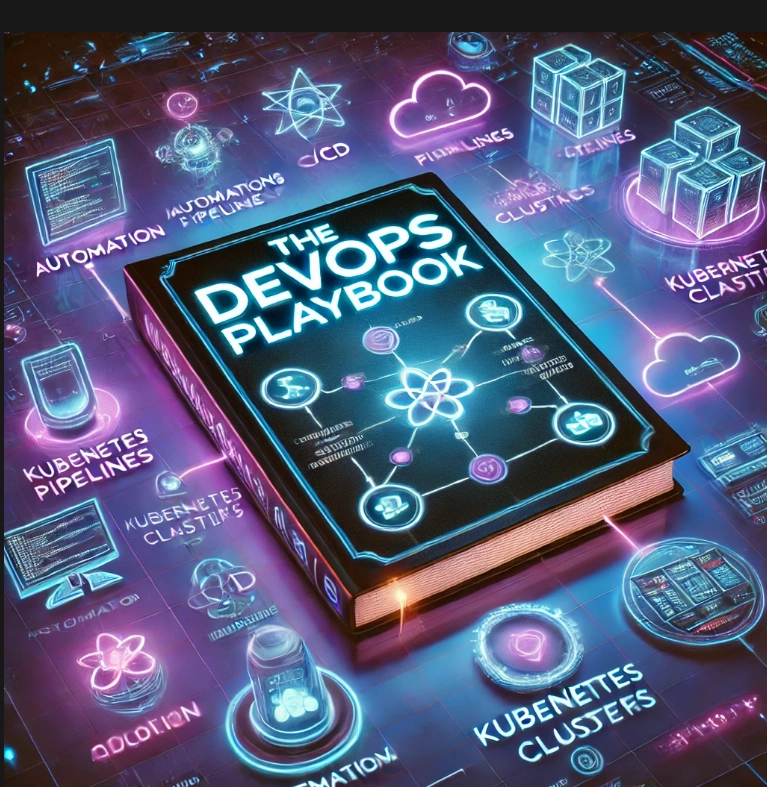This content originally appeared on DEV Community and was authored by Robin Rai
 Introduction
Introduction
In the previous blog, we explored what DevOps is, why it’s important, and how top companies use it to release software faster and more reliably.
Now, let’s take it a step further— How do you actually start learning DevOps? 
With so many tools, technologies, and practices involved, getting started can feel overwhelming. But don’t worry! By following a structured approach, learning DevOps becomes clear and achievable.
 By the end of this blog, you’ll have a solid roadmap to navigate your DevOps journey effectively.
By the end of this blog, you’ll have a solid roadmap to navigate your DevOps journey effectively.
 Step 1: Master the Fundamentals
Step 1: Master the Fundamentals
🔹 1. Learn Linux & Command Line
Most DevOps environments run on Linux, so understanding its fundamentals is essential.
Key Topics to Focus On:
Basic Linux commands (ls, cd, mkdir, grep, find, chmod, chown)
File system & permissions
Process management (top, ps, kill)
Networking basics (ping, curl, wget, netstat)
 Hands-on Practice:
Hands-on Practice:
Use Ubuntu on WSL to practice commands.
Set up a simple web server using nginx or Apache.
🔹 2. Learn Git & Version Control
Version control is essential for tracking changes, collaborating, and automating workflows.
Key Topics to Focus On:
Git basics (clone, commit, push, pull, merge, rebase)
Branching strategies (GitFlow, trunk-based development)
Working with GitHub/GitLab
Pull requests & code reviews
 Hands-on Practice:
Hands-on Practice:
Create a GitHub repository and track code changes using Git.
Collaborate on open-source projects.
🔹 3. Understand Networking Concepts
A strong grasp of networking helps in troubleshooting, security, and optimizing cloud deployments.
📌 Key Topics to Focus On:
 OSI & TCP/IP models
OSI & TCP/IP models
 DNS, HTTP, HTTPS, SSL/TLS
DNS, HTTP, HTTPS, SSL/TLS
 Load balancers & reverse proxies
Load balancers & reverse proxies
 Firewall basics
Firewall basics
 Hands-on Practice:
Hands-on Practice:
Use cURL & Postman to test APIs.
Set up an NGINX reverse proxy on a local machine.
 Step 2: Learn DevOps Core Practices
Step 2: Learn DevOps Core Practices
🔹 4. Understand CI/CD Pipelines
CI/CD (Continuous Integration & Continuous Deployment) enables fast and automated software releases.
📌 Key Topics to Focus On:
 What is CI/CD?
What is CI/CD?
 Writing CI/CD pipelines (YAML syntax)
Writing CI/CD pipelines (YAML syntax)
 Automating builds, tests, and deployments
Automating builds, tests, and deployments
 Popular CI/CD tools (Jenkins, GitHub Actions, GitLab CI/CD)
Popular CI/CD tools (Jenkins, GitHub Actions, GitLab CI/CD)
 Hands-on Practice:
Hands-on Practice:
Build a simple CI/CD pipeline using GitHub Actions.
Set up Jenkins on Docker and create an automated job.
🔹 5. Learn Containers & Docker
Containers provide portability and scalability for applications.
Key Topics to Focus On:
Docker architecture & CLI commands
Writing Dockerfiles & Docker Compose
Container networking & volumes
 Hands-on Practice:
Hands-on Practice:
Create a Dockerized Python/Node.js app.
Deploy it using Docker Compose.
🔹 6. Learn Kubernetes
Kubernetes is the leading container orchestration tool for managing microservices.
Key Topics to Focus On:
Kubernetes architecture (Pods, Nodes, Deployments, Services)
YAML configuration for Kubernetes objects
Helm Charts for package management
 Hands-on Practice:
Hands-on Practice:
Deploy an app on Minikube.
Explore kubectl commands.
 Step 3: Infrastructure as Code & Automation
Step 3: Infrastructure as Code & Automation
🔹 7. Learn Infrastructure as Code (Terraform & Ansible)
Infrastructure as Code (IaC) allows for consistent and automated provisioning of infrastructure.
Key Topics to Focus On:
Terraform: Writing .tf files, deploying AWS/Azure resources
Ansible: Writing playbooks for automation
 Hands-on Practice:
Hands-on Practice:
Write a Terraform script to provision an EC2 instance.
Use Ansible to automate package installations.
 Step 4: Monitoring, Logging & Security
Step 4: Monitoring, Logging & Security
🔹 8. Learn Monitoring & Logging
Observability is critical for maintaining system performance and troubleshooting issues.
Key Topics to Focus On:
Prometheus (metrics collection)
Grafana (data visualization)
ELK Stack (log management)
 Hands-on Practice:
Hands-on Practice:
Set up Prometheus & Grafana to monitor a Dockerized app.
Deploy ELK Stack for log management.
🔹 9. Security in DevOps (DevSecOps)
Security should be integrated at every stage of DevOps (Shift Left Approach).
Key Topics to Focus On:
Security best practices in CI/CD
Popular security tools: SonarQube, Trivy, Aqua Security
 Hands-on Practice:
Hands-on Practice:
Scan Docker images for vulnerabilities using Trivy.
Implement SonarQube to analyze code security.
 Step 5: Cloud & Reliability Engineering
Step 5: Cloud & Reliability Engineering
🔹 10. Learn Cloud Computing (AWS, Azure, GCP)
Cloud platforms provide scalability, reliability, and cost optimization for DevOps workflows.
Key Topics to Focus On:
AWS (EC2, S3, Lambda, IAM, CloudWatch)
Azure (VMs, AKS, DevOps Services)
GCP (Compute Engine, GKE, Cloud Run)
 Hands-on Practice:
Hands-on Practice:
Deploy a static website on AWS S3.
Launch a Kubernetes cluster on Azure AKS.
 Conclusion: Learning with a Structured Flow
Conclusion: Learning with a Structured Flow
Now that we’ve outlined the DevOps roadmap, we’ll deep dive into each topic one by one in upcoming blogs.
🚀 We will start with Linux, covering:
Command-line basics
File systems
Networking
Process management
Then, we’ll gradually move to:
 Git & Version Control
Git & Version Control
 Networking Concepts
Networking Concepts
 CI/CD Pipelines
CI/CD Pipelines
 Containers & Kubernetes
Containers & Kubernetes
 Infrastructure as Code
Infrastructure as Code
 Monitoring & Security
Monitoring & Security
 Cloud Computing
Cloud Computing
 This structured flow will help you build strong foundations before advancing to complex DevOps concepts.
This structured flow will help you build strong foundations before advancing to complex DevOps concepts.
 What’s the biggest challenge you’ve faced while starting DevOps? Let’s discuss in the comments!
What’s the biggest challenge you’ve faced while starting DevOps? Let’s discuss in the comments! 
This content originally appeared on DEV Community and was authored by Robin Rai
